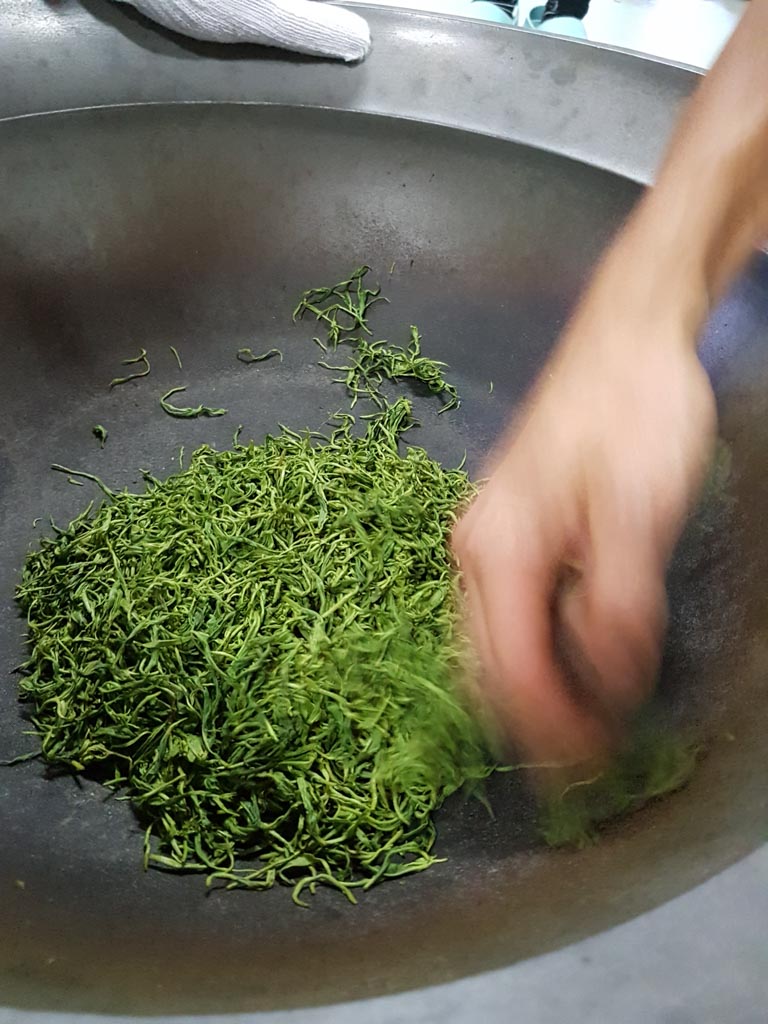TeaMania in Japan: Shincha Harvest at Obubu
After a long time, I have now come to write another report of our tea trip in Japan. After a short visit to our friends from Obubu in Wazuka, we decided to attend Obubu’s tea harvest event two days later. Wazuka is located near Uji, the cradle of Japanese tea, and is surrounded by picturesque hills covered with tea fields. This is thanks to the mayor who wants to turn Wazuka into a kind of Teatopia. I am sure that with the help of Obubu this will succeed!
We have a special relationship with the Obubu team because they were our first suppliers of high quality Japanese teas. In addition, they have always been there for us with advice and support. Therefore, we were especially pleased to meet the whole team in person.

The conditions on day X were ideal. No dew on the tea leaves and sunny weather. Since we were early, we had the opportunity to meet the rest of the Obubu team, including many interns from different countries. Jasmin, our daughter, was especially fond of Chase from the USA. Later, she diligently took pictures and also actively helped with the harvest and, later the processing of the tea leaves.


Usually, two or three newly grown tea leaves plus one bud are harvested. The tea pickers intuitively feel the predetermined breaking point of the stems with their fingers. This results in less damage to the tea leaves compared to mechanical harvesting. Damaged tea leaves start to oxidize at the damaged spot. This is later noticeable in the taste.


A total of 4.2 kilograms of tea leaves were harvested. They were immediately heated to prevent oxidation. After all, today we want to make green tea and not black tea.



The tea leaves are heated in a wok. This is the method used in China and in parts of Japan. The tea produced in this way is called Kamairicha. Usually, tea in Japan is steamed, not roasted, but for demonstration purposes, the Kamairi method is more suitable.

To get the moisture out of the tea leaves and to break the cell walls, the tea leaves are kneaded after roasting. The rolling into needle shape is waived due to time constraints. Actually pity since Akky and the Obubu team won the second place at the Uji tea rolling competition and can be called masters of their art.






A small bag of tea for each participant to take home. The freshly made Shincha was tasted at the subsequent bento lunch. The tea is characterized by a very floral aroma which is probably due to the freshness. This aroma then changes, with increasing storage into umami.

Between the individual processing steps, there was also always a little time to further educate oneself in Matcha production and preparation. Tencha is filled into the top of the stone mill and finely ground by constant rotating. Subsequently, the freshly ground Matcha is whipped.


The tea harvest event of Obubu was a great experience which we can recommend to every tea enthusiast. Wazuka itself is also recommended for a day trip or even for a longer stay.


